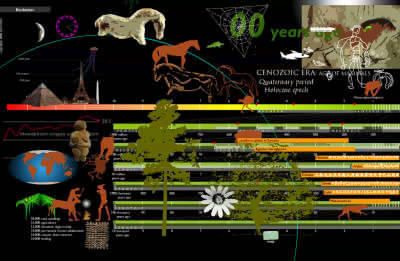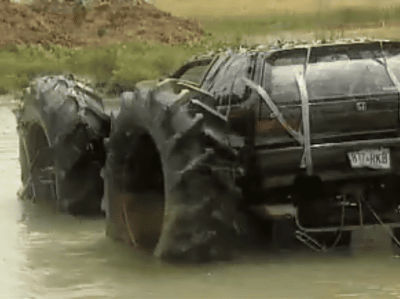The history of the 'Strand Beast', a virtual lifeform that moves with the wind, becoming incredibly powerful

The Dutch sculptor
Strandbeest
https://www.strandbeest.com/evolution
Jansen divides the evolution of artificial life from when he first conceived it to when Strandbeests will fly in 2021 into 13 periods:
◆01: Pregluton 1986-1989
Jansen cited the earliest stage of Strandbeest as the urge he had around 1986 to 'observe the phenomenon of evolution with his own eyes.' Jansen divides the evolution of Strandbeest into 12 stages, but apart from the 12 stages, he initially conceived of a line of 'computer virus organisms' moving on a computer screen rather than a three-dimensional object as artificial life, which is the origin of Strandbeest. Regarding the initial concept, Jansen said, 'At that time, I only had dreams about life.' Since 1986, Jansen has been contributing columns to Dutch national newspapers, and his columns often contain random technical ideas, fantasies, and musings, but they also included the 'Strandlopers,' the origin of Strandbeests.
Below are notes from Jansen on his original concept of a Strandbeest, a linear lifeform on a computer known as a 'Linebeest.'

Below is a sketch of an artificial quadruped drawn by Jansen in 1989. It shows that there was an idea of 'walking artificial life' from the early days. According to Jansen, his passion for 'walking' gradually increased, and in 1990 he moved to the next stage by trying to get a plastic tube.

Jansen remembers with sadness his first Strandbeest, Animalis Vulgaris, which he created out of plastic tubes in 1990. 'It looked so pitiful lying on its back. It must have been a kind of irrational optimism to think I could make it walk,' Jansen said.
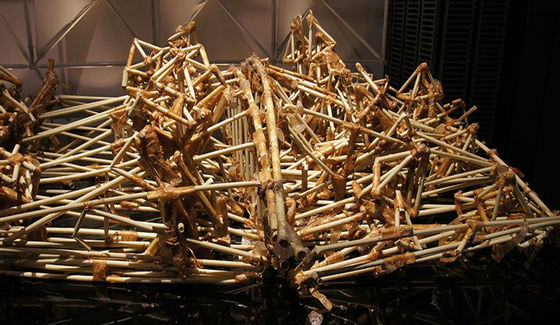
Animalis vulgaris had 28 legs connected to a central rotating spine by small tubes, which were held together by adhesive tape. It was 2.5m long, 2m wide, and 60cm tall. When one leg was on the ground, the other legs would lift up, and the idea was to move sideways by rotating and linking them in a complex motion. However, in reality, it could only move its legs when lying on its back, and it could not stand up. The adhesive tape made the joints and connections brittle, and it broke within a year.
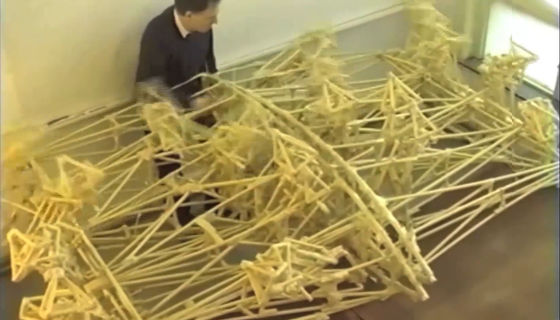
◆03: Chorda (1991-1993)
The new Strandbeest created during this period is 'Animaris Currens Vulgaris'. The whole structure has been improved to be more durable by tying the tubes with nylon tape. Below is a sketch of Animalis Currens Vulgaris.

During the Korda period, Jansen developed a new walking system. Using a genetic algorithm, he created a triangular leg structure with many gaps and light weight. The lighter legs made it easier to lift and move forward. However, Animalis Karens Vulgaris could only walk in a jerky manner by pulling its head while standing on its own, and could not move on its own.
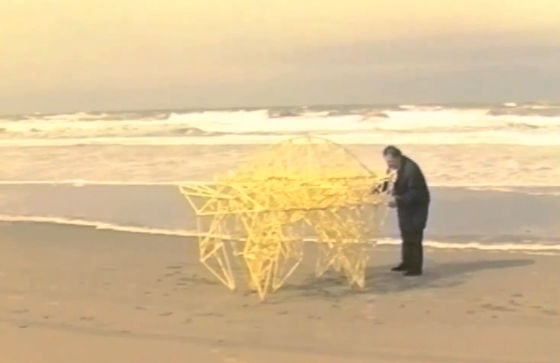
A distinctive change in the Kalidum era is the discovery of the 'heat gun' that shrinks heat shrink tubing. The heat gun made the vertices of the skeleton tighter and stronger, making them more durable, which was a revolutionary tool for Jansen at the time. During the Kalidum era, three types of Strandbeests were created: Currens Ventosa, Arena Malleus, and Sabulosa. All of them became more active, and the idea of having wings to move on their own by catching the wind was born. However, according to Jansen, the heat gun was not yet handled correctly at this time, and the joints were fragile and it was difficult to make them stand on their own. Below is Currens Ventosa from 1993. It has 48 legs and two large wings.
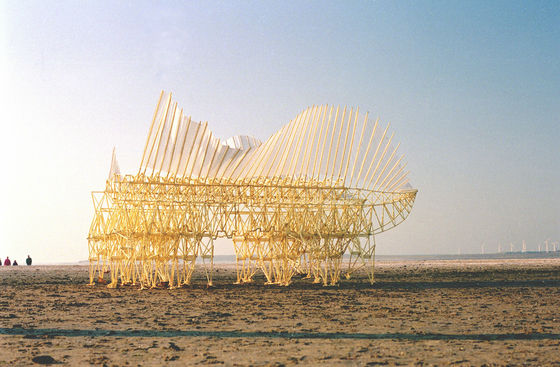
Below is the 1994 Sabrosa. The idea was to reduce the number of legs to make it lighter and increase the number of wings, so that it could catch the wind and dig into the sand. However, in reality, it only worked occasionally.
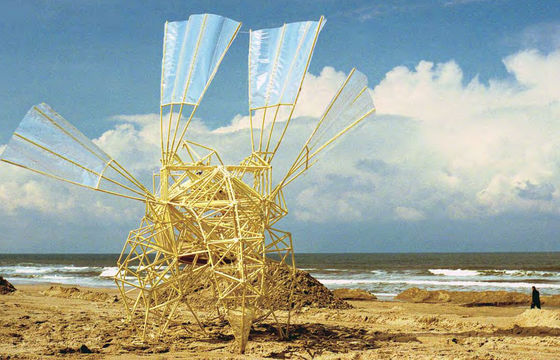
During the Tepidim period, five aircraft were made: Ancora, Properans, Propagare, Geneticus, and Geneticus Ondula. As its name suggests, the Properans had a rotating propeller, which allowed it to catch the wind more easily and move much faster, but it was too heavy and broke easily.
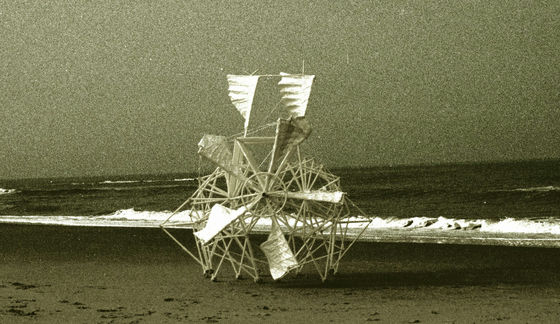
It was also during this time that the concept of a 'swarm' first appeared. The idea was that genetics could protect each other by gregariously gathering together, just like real animals, to prevent individuals from being blown away by the wind.
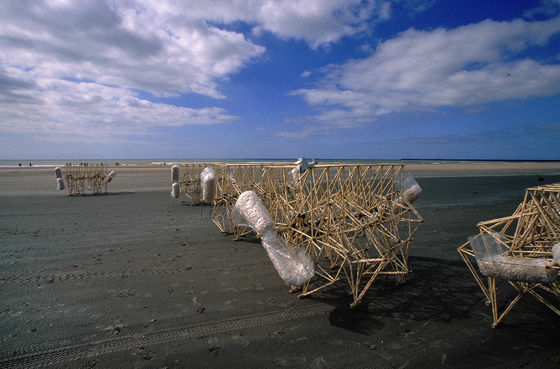
Early Strandbeests used plastic tubes, but during this period wood was occasionally used, and 'Lignatum was the time of adultery,' Jansen said. At Lignatum, four machines, 'Tabula,' 'Vulgaris,' 'Lignatus,' and 'Transport,' which were modeled after rhinos, and two auxiliary machines, 'Spissa Carta' and 'Rugosus Ondula,' were produced. Below is an image of Jansen pulling the 'Rhino Transport,' which is 8 meters long, about 5 meters wide and high, and weighs 3.2 tons.
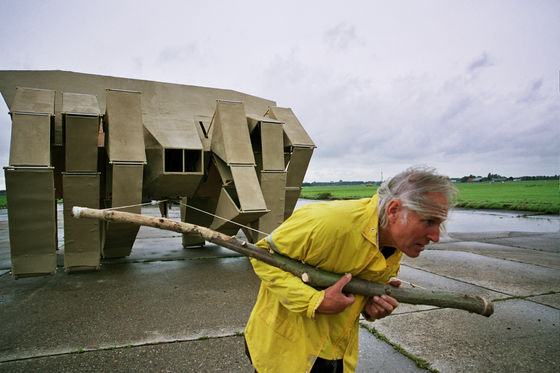
The Rhino Transport can also carry people and use the wind to move. It can move quite smoothly, but it seems that it walked faster than expected, and its joints quickly broke.
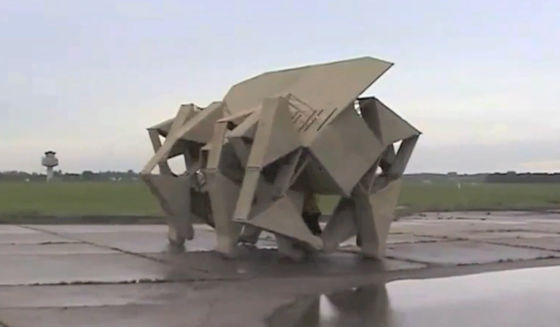
'Spissa Carta' is a cardboard scale model of a giant rhino transport.
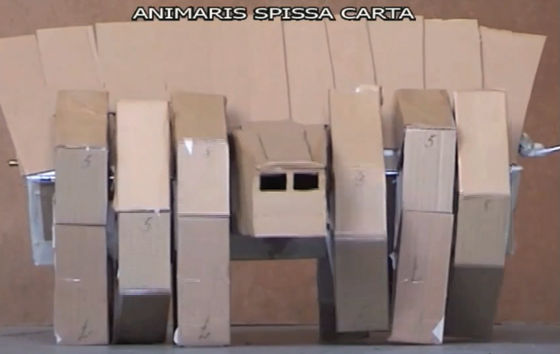
By the 7th Vaporum, which is the halfway point, Strandbeests have evolved from 'objects that are moved' to 'objects that move on their own'. Even the self-propelled Strandbeests up until the 6th Vaporum were still propelled by the wind. On the other hand, Rugosus Peristhaltis from 2002 incorporates the concept of 'muscles' that contract and expand to move their body like a caterpillar.
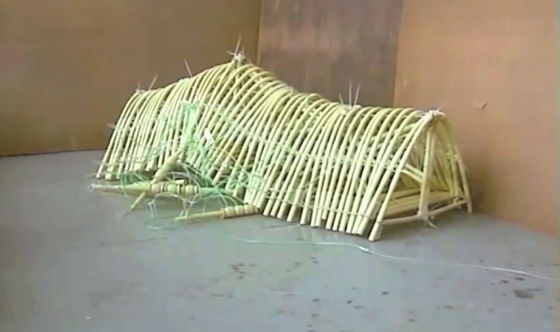
This was then expanded into 2003's Currens Vaporis, which catches the wind with its wings, stores small gusts of air, and sends them to its front body, controlling the contracting tube 'muscles' to enable it to move more smoothly and stably with less wind.

At this stage, we are adding nerve cells to the Strandbeests, which have acquired the structure to walk when they catch the wind and even muscles. In addition to the structure that supports its heavy wings, 'Percipiere Primus' has a long hose that is placed along the ground and has a 'sensing function' that changes direction when the hose sucks in water to avoid going into the water.
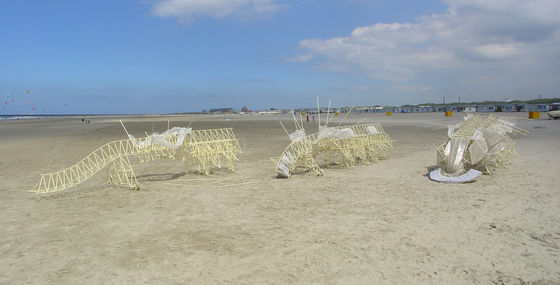
Jansen calls this period the 'Age of Self-Destruction.' The 2009 robot Umerus was designed to move in a regular fashion by reducing its reliance on wind and propelling itself with its legs using pumps located on its shoulders, but it had problems with its thick, poorly coordinated parts, which meant it would often break its own spine.
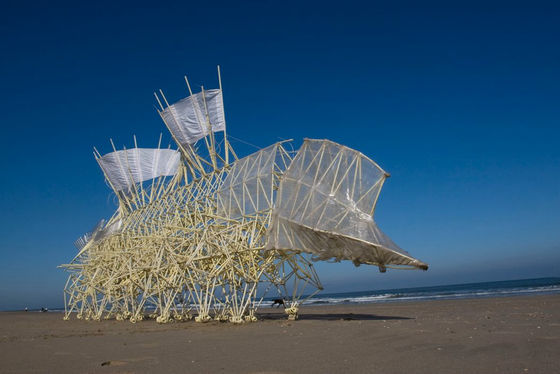
The same can be said for the Siamesis, the largest robot to date, which is over 10 meters long. Although it performed perfectly in experiments, when it was made to walk on a beach it self-destructed within a few tens of seconds.
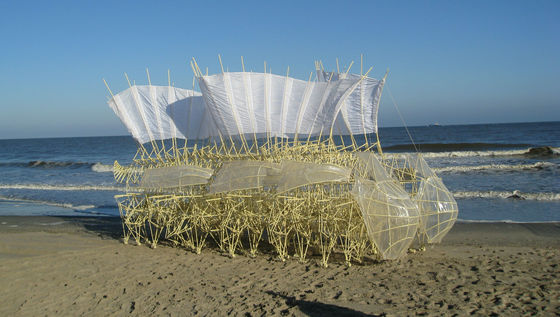
'Adularis,' created in 2012, is the first Strandbeest with a mechanism that allows it to walk by swinging its tail. It is relatively small, about 5m in length and 1.5m in height, and is stable enough to withstand strong winds.

Eight Strandbeests were built at Aurum. The most distinctive one is the 'Plaudens vela', which has many sails so it can sail in light winds. The surface area of the sails is said to be comparable to that of a large cabin yacht.

Apodiacula is an improved version of Prausden Vela, and is equipped with a structure to prevent it from tipping over, consisting of two ski pole-like rods. Although it is a large Strandbeest, about 5m in length and 4m in height, it moves smoothly while supporting itself with the sticks.
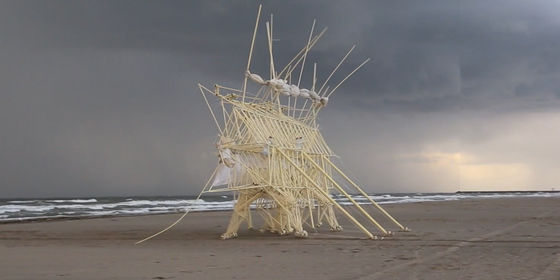
A caterpillar-like mechanism appeared in the 7th Vaporum, but it has been further refined and evolved into a wave-like form with connected nodes. Below is 'Uminami', one of the Strandbeests from the Bluecome period, and its prismatic body can crawl along the beach and move forward at a jogging speed.
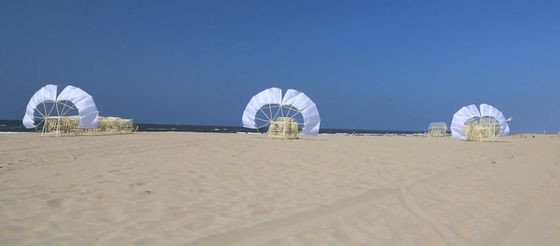
You can see Uminami in action in the following movie.
◆13: Volantum 2020-2021
Strandbeests usually drag sand along their path, causing the ground to gradually sink under their feet. To avoid getting buried in the sand, Volantum's Strandbeests have finally acquired the means to fly. The first flying Strandbeest, Ader, floats at a height of about 50cm, using weights to stabilize it so it doesn't fly away.
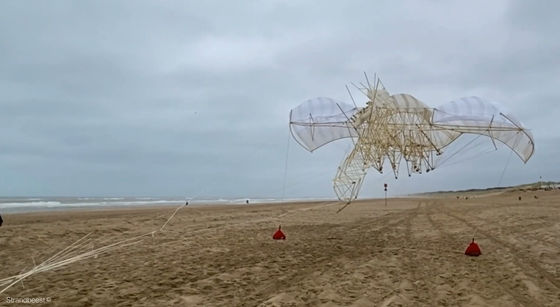
You can see Adele floating in the movie below.
The image below shows the evolutionary history of Strandbeests from Preglutton to Volantum, summarized as a genealogy. It shows which machines were inherited and evolved, when and how.
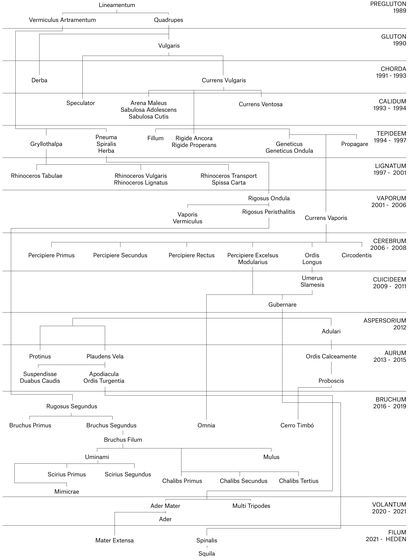
'Animaris Rex,' which Jansen has been working on since the summer of 2023, is a giant strandbeest made up of multiple connected units. You can see the 18m-long Rex walking quite smoothly on the beach on YouTube. It is published in.
2023 Animaris Rex - YouTube
Related Posts:



